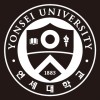
Characterization and Evaluation of Diagnostic Biomarkers for Tuberculosis
Active TuberculosisThere was no sensitive and specific biomarker for tuberculosis infection, disease progression and predicting the prognosis of treatment. Therefore, the investigators aimed to investigate and evaluate the newer biomarker for the diagnosis of TB infection. To investigate the new biomarker for TB infection, the investigators will recruit the participants including active TB patients, healthy household contacts, healthy community control.

Immunosuppression in HIV-infected Patients With Tuberculosis in Ethiopia
HIV InfectionTuberculosis1 moreBackground: Tuberculosis (TB) and HIV are leading causes of disease and death in Subsaharan Africa. Antiretroviral therapy (ART) dramatically improves prognosis in HIV infection, but TB is still a common complication in HIV-infected subjects. Management of TB-HIV co-infection is complex, both with regard to diagnosis and treatment. Since scaling-up of ART requires management of most patients in primary health care, it is critical to achieve better strategies for TB-HIV co-infection at peripheral levels of the health care system in endemic regions. This includes development of new methods to assess the severity of HIV disease and the need to start ART during TB treatment in this population. Aims: To compare a scoring system for clinical signs of immunosuppression with CD4 cell counts to assess HIV disease severity and indications for ART initiation, and to correlate immunosuppression status with treatment outcome. Workplan: CD4 cell levels and results of clinical scoring has been compared in 1100 patients with TB, using HIV-negative subjects with TB treatment for control. Inclusion was closed in February 2012, and follow-up of participants completed in August 2012. Plasma levels of immune activation and inflammatory markers will be correlated with the degree of immunosuppression. Significance: TB is the most significant clinical challenge to the successful scaling-up of ART in Africa. In order to improve management in primary health care it is necessary to find robust and reliable techniques for determining disease severity and identification of patients who need to start ART during TB treatment. This study may contribute to increased knowledge in this field and help to modify guidelines for management of TB-HIV co-infection in Ethiopia as well as in other resource-limited settings.

Pharmacokinetics of Anti-tuberculosis Drugs in Gastrectomized Patients
TuberculosisTuberculosis2 moreThe purpose of this study is to evaluate the effect of gastrectomy on pharmacokinetic profile of first-line anti-tuberculosis drugs in patients with pulmonary tuberculosis (TB).

Screening of Children in Household Contact With Adult TB Patients in Mbarara Hospital, Uganda
TuberculosisThe proposed study aims to establish a pilot program through a prospective cohort study offering routine contact tracing, investigation and prophylaxis for LTBI, and treatment of TB disease to children <5 years living in the same household as adults diagnosed with smear/culture-positive pulmonary TB in Mbarara Regional Referral Hospital

Prognostic Value of Interferon Gamma Release Assays in Predicting Active Tuberculosis Among Individuals...
TuberculosisLatent TuberculosisThe objective of this study is to assess the efficacy of the two current TB (tuberculosis) blood tests (Interferon Gamma Release Assays (IGRA)) compared with the standard skin test (Mantoux Tuberculin Skin Test (TST)), for predicting active tuberculosis among those at increased risk of TB. Those at increased risk are defined as either newly arrived immigrants or people who have been in contact with TB cases. The study will also provide information on the cost effectiveness of different testing strategies, such as the two step testing approach recommended by NICE. The study is to be funded by the NIHR Health Technology Assessment programme. 10,000 participants will be recruited from 12 hospitals and a network of GP surgeries in London. All participants will have the skin test and blood taken for both assays. Disease status of participants will then be followed up for an average of 24 months using the national register of clinical reports, a phone call and the national microbiological database. The risk of developing active disease is highest in the first two years after exposure. During followup there will be no additional diagnostic procedures unless symptoms occur, i.e. in line with current NICE policy. A sub group of patients, selected as a random 25% of participants, will have a repeat IGRA test shortly after the first test to investigate whether the skin test affects the result of the blood test.

Safety And Efficacy Of Rifabutin In Patients For Non-HIV Patients
TuberculosisNon-tuberculous Mycobacterial Diseases (Including MAC Disease)The objective of this surveillance is to collect information about 1) adverse drug reaction not expected from the LPD (unknown adverse drug reaction), 2) the incidence of adverse drug reactions in this surveillance, and 3)factors considered to affect the safety and/or efficacy of this drug.

Safety And Efficacy Of Rifabutin In HIV Patients
Non-tuberculous Mycobacterial DiseasesTuberculosis1 moreThe objective of this surveillance is to collect information about 1) adverse drug reaction not expected from the LPD (unknown adverse drug reaction), 2) the incidence of adverse drug reactions in this surveillance, and 3)factors considered to affect the safety and/or efficacy of this drug.

Adverse Reactions and Efficacy of Fixed-dose Combination Anti-tuberculosis (TB) Drugs
TuberculosisThe fixed-dose combinations (FDC) with two or more antituberculous drugs in one capsule or tablet are available to prevent the development of drug resistance. However, the fixed-dose combination regimen is not consistent with the dosages that are usually given. The present available FDC chemotherapy (Rifater) for pulmonary tuberculosis that is used in Taiwan has a higher ratio of isoniazid to rifampin and pyrazinamide. The higher risk of drug toxicity and adverse reactions when using fixed-dose combinations regimen should be considered. The aim of the present study is to compare the toxicity between using FDC regimen (Rifater/Rifinah) in Taiwan and single drugs in the treatment of newly diagnosed pulmonary tuberculosis. The investigators also evaluate the efficacy of two regimens and determine the incidence of discontinuation of TB drugs and the predisposed factors between two regimens.

Immune Responses to Mycobacterium Tuberculosis
Mycobacterium TuberculosisThis study, conducted at the University of Mali in the capital city of Bamako, will investigate how the body reacts to infection with Mycobacterium tuberculosis (MTB), the organism that causes tuberculosis. Tuberculosis is a major global health problem whose solution requires development of an effective vaccine. However, incomplete understanding of how immunity to MTB is acquired and measured limits vaccine development. This study will focus on certain immune system cells - CD4+ T cells - that appear to be very important in fighting tuberculosis. Individuals 16 years of age and older who have or have not been exposed to either tuberculosis or HIV, or both, may be eligible for this study. Candidates will be screened with a medical history, physical examination, blood tests, review of medical records and laboratory tests, and, if medically indicated, a chest x-ray. Individuals whose medical records indicate a past history of tuberculosis or a positive test for exposure to tuberculosis will have a tuberculin skin test. For this test, a few drops of fluid are placed under the skin to see if the immune system reacts to the substance, indicating previous exposure to MTB. Participants will come to the University of Mali 10 times over a 1-year period - 7 times within the first 3 months of the study and then once every 3 months until 1 year after enrollment. At each study visit, they will be asked about their medical history and will donate 75 milliliters (about 1/3 cup) of blood, totaling 830 mL over the entire year. More blood may be requested if the participant's immune system reacts strongly to MTB in laboratory tests. No more than 450 mL (2 cups) of blood would be collected every 6 weeks; this amount is the Red Cross limit for regular blood donations every 6 weeks. The blood samples will be used for tests that measure the level of immunity to tuberculosis. Genetic tests may be performed on blood cells to help interpret special tests of immunity. Because HIV-infected people are included in the study, the findings may also provide information on how HIV renders vulnerability to opportunistic infections, including tuberculosis.

Rapid Characterization of Paucibacillary TB Along Tex/Mex Border
Mycobacterium TuberculosisThis study will test a method of detecting tuberculosis-causing bacteria that are resistant to current medication treatments. Blood samples will be collected from patients from 3 sites and 3 mainly Hispanic populations in Texas, Mexico, and Colombia. Up to 780 males and females, ages 18-85 years, will participate. The study population will consist of 390 people with any of 3 forms of tuberculosis (TB) and 390 people who are either healthy or with a disease initially thought to be one of these 3 forms of TB but then ruled out. Volunteers will only be contacted, invited to participate and interviewed at the beginning of their evaluation for possible TB.The study team will follow up with the health department to determine if the volunteer was indeed diagnosed with TB, and with the laboratory to determine the results of TB tests at diagnosis and during the course of treatment.
